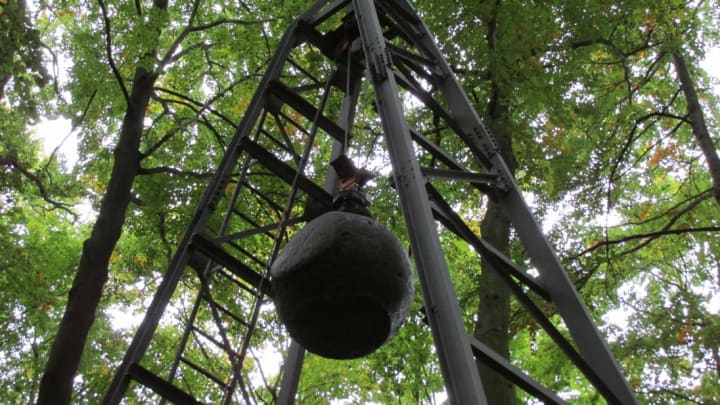An earthquake is caused by the shifting of tectonic plates, the pieces of Earth's crust that make up the surface of the planet. But humans have figured out how to create artificial earthquakes without relying on Mother Nature. YouTube personality Tom Scott recently visited the world's oldest working seismic station in Göttingen, Germany, to experience one of these mini-earthquakes in person.
Wiechert'sche Erdbebenwarte Göttingen is home to a 4-ton steel ball that can be hoisted 46 feet in the air. When dropped, the impact sends shock waves through the ground. The power to manufacture earthquakes on demand helps the team calibrate their seismographs, but there's another reason the rig was set up: It proved the theory that artificial quakes can be used to measure the earth underground.
German geophysicist Emil Wiechert got the idea a century ago. By using seismic meters to measure the reflections of waves rocking an area, he hypothesized that he would end up with an accurate sketch of what the world looked like below. The steel ball was set up in Göttingen in 1903, and it proved his theory to be correct.
More sophisticated instruments are used to measure subterranean landscapes today, but the mini-earthquake maker still functions as well now as it did 100 years ago. You can see it in action in the video below.
[h/t Tom Scott]
